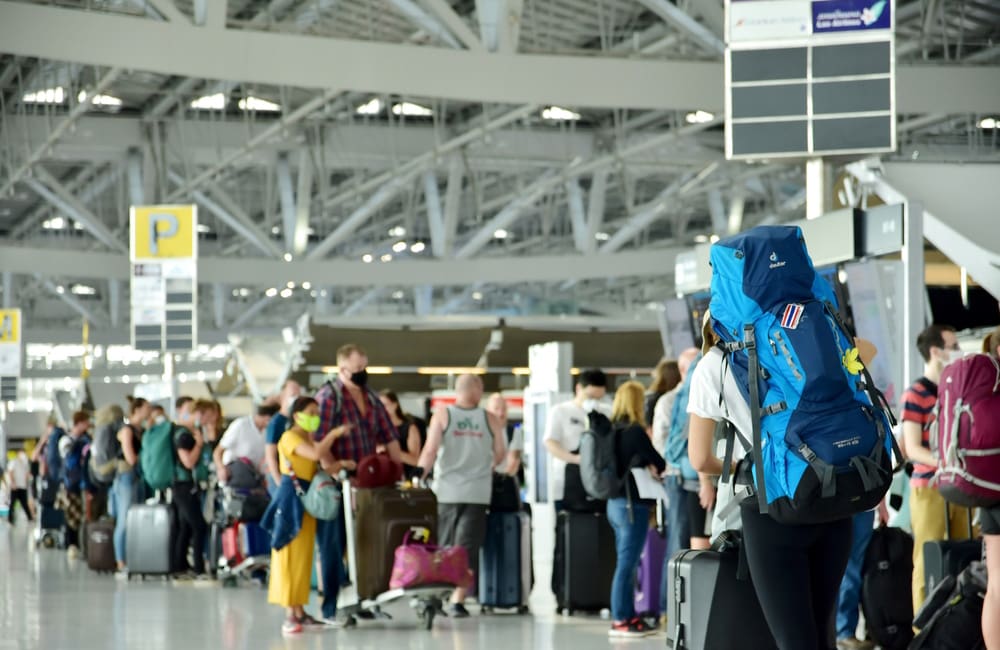In a positive sign for travel sellers, the airline industry is set to soar in 2025, with passenger numbers expected to break the 5 billion mark for the first time, according to the International Air Transport Association (IATA). That’s a nearly 7 per cent rise compared to 2024, translating to a busy year for travellers and those who make travel happen.
But that’s not all. Airline revenue is also set to smash records, reaching a whopping $1.01 trillion (around AU$1.6 trillion) – the first time it’s ever crossed the $1 trillion threshold. This translates to a 4.4 per cent increase year-on-year, painting a positive picture for the industry’s health.
So, what’s driving the boom?
Lower jet fuel prices and efficiency gains are major contributors, making travel more affordable for passengers.
The average airfare in 2025, including extras like checked baggage, is expected to be US$380 (about AU$610) – a 1.8 per cent decrease compared to 2024. In real terms, that’s a significant 44 per cent drop compared to 2014, highlighting the industry’s commitment to offering value.

But passenger demand is also soaring, with projected growth of 8 per cent in 2025. This outpaces the expected 7.1 per cent expansion of available seats, meaning airlines are likely to see their planes packed with eager travellers.
Confirming the optimistic outlook for demand, a recent IATA poll found that two in five (41 per cent) polled travellers said they expect to travel more, while 53 per cent expect to travel at the same frequency as 2024.
Meanwhile, nearly half (47 per cent) of surveyed travellers said they expect to spend more on travel, while 46 per cent expect travel expenditure to remain the same.
It isn’t all good news for airlines, however.
While net profits are projected to rise to US$36.6 billion (AU$58.8 billion), unresolved supply chain issues and increased labour costs will continue to pressure profitability – although there will be a decline in fuel spend for airlines as jet fuel prices drop to an average $87/barrel in 2025 (from $99/barrel in 2024).


“In 2025, industry revenues will exceed $1 trillion for the first time. It’s also important to put that into perspective,” IATA Director General Willie Walsh said.
“A trillion dollars is a lot – almost 1 per cent of the global economy. That makes airlines a strategically important industry. But remember that airlines carry $940 billion in costs, not to mention interest and taxes. They retain a net profit margin of just 3.6 per cent.
“Put another way, the buffer between profit and loss, even in the good year that we are expecting of 2025, is just $7 per passenger. With margins that thin, airlines must continue to watch every cost and insist on similar efficiency across the supply chain.”
When it comes to regions, profitability varies. Asia-Pacific, bolstered by strong demand from China, will remain the largest market by revenue passenger kilometres (RPKs), with an 18.6% growth in 2024. But airlines in the Middle East are expected to lead in profitability, achieving a net profit margin of 8.2%. African airlines are expected to be the weakest at 0.9%.


Walsh said the overall rise in profits “will be hard-earned as airlines take advantage of lower oil prices while keeping load factors above 83 per cent, tightly controlling costs, investing in decarbonisation, and managing the return to more normal growth levels following the extraordinary pandemic recovery”.
“All these efforts will help to mitigate several drags on profitability which are outside of airlines’ control, namely persistent supply chain challenges, infrastructure deficiencies, onerous regulation, and a rising tax burden,” he added.
While risks from geopolitical conflicts and oil price fluctuations remain, the forecast underscores the critical role airlines play in global economic growth, supporting 86.5 million jobs and contributing 3.9 per cent of global GDP.
“Looking at 2025, for the first time, traveller numbers will exceed five billion and the number of flights will reach 40 million,” Walsh remarked.
“This growth means that aviation connectivity will be creating and supporting jobs across the global economy. The most obvious are the hospitality and retail sectors which will gear up to meet the needs of a growing number of customers. But almost every business benefits from the connectivity that air transport provides.”

